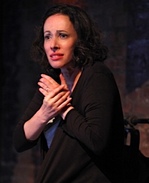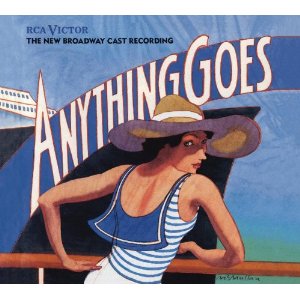SITE GUIDE
SEARCH
REVIEWS
REVIEW ARCHIVES
ADVERTISING AT CURTAINUP
FEATURES
NEWS
Etcetera and
Short Term Listings
LISTINGS
Broadway
Off-Broadway
NYC Restaurants
BOOKS and CDs
OTHER PLACES
Berkshires
London
California
New Jersey
DC
Philadelphia
Elsewhere
QUOTES
TKTS
PLAYWRIGHTS' ALBUMS
LETTERS TO EDITOR
FILM
LINKS
MISCELLANEOUS
Free Updates
Masthead
A CurtainUp Review
Macbeth
The Bard's Famous Murdering Couple Open On Two Different Stages in One Week
The Bard's Famous Murdering Couple Open On Two Different Stages in One Week
|
Life’s but a walking shadow; a poor player,/ That struts and frets his hour upon the stage/ And then is heard no more: it is a tale/ Told by an idiot, full of sound and fury,/ Signifying nothing— Macbeth.
|
|
|
The Aquila's Macbeth at the Judson Gym
The good news about Aquila’s Macbeth is that it invents a spanking new scene, with Lady Macbeth giving birth as the play opens. It’s surely a nod to her famous line where she tells Macbeth that she has given “suck and know how tender ‘tis to love the babe that milks me.” The renowned English scholar L. C. Knights once used this textual snippet as a basis for his wonderful 1933 essay “How many children had Lady Macbeth?” While this production brings this to vigorous life the bad news is that the rest of the production is bland. In spite of its talented leading actors, Guy Oliver-Watts and Rebecca Reaney, it fails to break any new dramatic ground. And why do another Macbeth if you don’t’ have something new to say?
The Gym at Judson is a tricky venue, but what worked better here than in a more conventional theater for Lysistrata Jones doesn't serve Macbeth's dramatic action. Desiree Sanchez, who wears the double hat of director and designer here, keeps the stage prop-free. Consequently, there’s no visual difference between the scenes on the blasted heath, the interiors of Inverness and Dunsinane Castle, or the Scottish and English countryside. Though Peter Meineck’s lighting hits the mark by cleanly outlining speakers during their major monologues and casting shadows during the play’s tragic moments, the overall effect is flat. The main problem is that Sanchez, with the exception of her opener, is more intent on verbal eloquence than reinterpreting this sublime tragedy.

Melissa Friedman as Lady Macbeth
(Photo: Carol Rosegg) |
Curiously, Russell taps into the notion of Lady Macbeth’s “lost child” as well. Before the main action starts, you see a huge mural on the stage’s back wall, depicting the two Macbeths softly gazing at an infant.
The mural takes on dramatic immediacy when Lady Macbeth enters in Scene One, and mirrors the image by looking at a framed family photo on her desk. She then shatters this harmonious atmosphere by sitting down to watch a video loop with a montage of images: folks walking through a cemetery, military pundits giving speeches, and soldiers advancing through austere battle grounds.
This Macbeth has lots of hurly-burly, but it’s not manifested through the old clichés. The idea that the weird sisters must be females is boldly overturned. The bevy of hags is here comprised of two warlocks and one witch, all dressed in ordinary clothes. Instead of making cameo appearances in godforsaken places, they remain on stage throughout the evening. Their persistent presence is felt much like chewing gum stuck to the sole of your shoe. Perching themselves atop three portable ladders on a dilapidated set (by Mikiko Suzuki MacAdams), they indifferently watch the action, and occasionally comment on the goings-on. The epitome of fair and foul, the influence of these weird sisters is subtle but penetrating.
Russell also terrifically revamps the Act 3, Scene 4 banquet scene . Traditionally, Macbeth hosts a supper for his nobles and, during the dinner, hallucinates that Banquo is sitting in his seat. In this reconstructed scene, he hosts a dance, and as he joins his nobles on the dance floor, the murdered Banquo steps in and becomes his partner. A striking new take on this spooky scene —. and it works.
The acting is crisply executed, with Ty Jones’ Macbeth and Melissa Friedman’s Lady Macbeth rising to their crucial dramatic moments. But the star turn truly belongs to Richard Easton. Without setting a foot on stage, he delivers a convincing portrayal of Duncan a la Skype and “live” media broadcasts from Inverness Castle. The other actors all acquit themselves well. They never try to upstage the principals but nail down each plank of this tragedy with resounding conviction.
Of the two current productions, the Epic’s is clearly the better bet. And if you a question about the Scottish play, the company is also presenting a post-performance forum lead by scholars, authors, and theater professionals following each performance.
|
Aquila Theatre Macbeth Written by William Shakespeare Directed by Desiree Sanchez Cast: Guy Oliver-Watts (Macbeth), Rebecca Reaney (Lady Macbeth, Boy), Alexandre Milne (Witch 1), MaryWerntz (Witch 2), Janet Dunson (Witch 3, Servant), James Lavender (Duncan, Murderer 1, Macduff), Aaron McDaniel (Malcolm, Fleance), Peter F. Gardiner (Captain, Messenger, Banquo, Murderer 2), Rachael Barrington (Rosse, Lady Macduff). Sets: Desiree Sanchez Lighting: Peter Meineck Fight Director: Turner Smith Technical Director: Amy Carr The Gym at Judson, 243 Thompson Street. Tickets are $45. 212/ 868-4444 From 4/18/12; opening 4/25/12; closing 5/06/12. Wednesday through Saturday @ 8pm; Thursday, Saturday, and Sunday @ 2pm. Running time: 2 hours; 20 minutes including intermission. Reviewed by Deirdre Donovan based on press performance of 4/20/12 Epic Theatre Ensemble's Macbeth Directed by Ron Russell Cast: Richard Easton (Duncan), Ty Jones (Macbeth), Melissa Friedman (Lady Macbeth), Devin E. Haqq (Ross), Rhett Henckel (Banquo), Aime Donna Kelly (Witch), Scott Kerns (Malcolm), Lori E. Parquet (Lady Macduff), Julian Rozzell, Jr. (Witch), Godfrey L. Simmons, Jr. (Macduff), James Wallert (Witch) Sets: Mikiko Suzuki MacAdams Costumes: Alixandra Gage Englund Lighting: Cat Tate Starrner Sound: Ron Russell The 47th Street Theatre, 304 W. 47th Street. Tickets are $35. (212) 279-4200 From 4/20/12; opening 4/29/12; closing 5/26/12. Wednesdays, Fridays, and Saturdays @ 8pm, with matinees on Saturdays @ 2pm. There is an additional performance on Thursday, May 24th @ 8pm. Running time: 2 hours, including intermission. Reviewed by Deirdre Donovan based on press performance of 4/26/12 |
|
REVIEW FEEDBACK Highlight one of the responses below and click "copy" or"CTRL+C"
Paste the highlighted text into the subject line (CTRL+ V): Feel free to add detailed comments in the body of the email. . .also the names and emails of any friends to whom you'd like us to forward a copy of this review. Visit Curtainup's Blog Annex For a feed to reviews and features as they are posted add http://curtainupnewlinks.blogspot.com to your reader Curtainup at Facebook . . . Curtainup at Twitter Subscribe to our FREE email updates: E-mail: esommer@curtainup.comesommer@curtainup.com put SUBSCRIBE CURTAINUP EMAIL UPDATE in the subject line and your full name and email address in the body of the message. If you can spare a minute, tell us how you came to CurtainUp and from what part of the country. |

Slings & Arrows- view 1st episode free
 Anything Goes Cast Recording
Anything Goes Cast RecordingOur review of the show
 Book of Mormon -CD
Book of Mormon -CDOur review of the show

